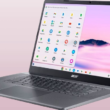Google created Google AdSense twenty years ago to assist publishers of all sizes in generating revenue from their websites. Its user-friendly ad network made digital advertising simple by bringing together publishers and advertisers globally to exchange ad space. And today, They give its ad network’s publishing partners billions of dollars each year. As a result, content producers can devote more time to doing what they do best: producing outstanding content.
The options available to publishers for monetization have changed along with the advertising industry. Today, website owners sell their ad space through a combination of sell-side platforms, ad networks, and direct sales, frequently utilizing several technologies at once.
Google is changing the revenue-share structure of AdSense and paying publishers based on impressions as a result. With these modifications, publishers will have a consistent method to evaluate the varying rates for the different technologies they use to monetize, and the media-buying process will be even more transparent.
Google don’t anticipate that these updates will have an impact on publishers’ earnings based on our testing.
Modernizing the AdSense revenue share system

AdSense has always been open and honest about the cost of our service, which is in line with industry standards. Publishers who have opted to monetize their content through AdSense have retained 68% of the earnings.
In the past, fees were handled by the Google AdSense network in a single transaction. The AdSense revenue share is now divided into different rates for the sell-side and buy-side. Publishers who use AdSense for content will get 80% of the revenue after the advertiser platform—such as Google’s buy-side or third-party platforms—takes its cut.
For instance, Google Ads keeps 15% of advertiser spend on average when it purchases display ads on AdSense. There are differences because many advertisers opt to pay based on user actions, such as a click or conversion, rather than Google AdWords’ fixed per-impression fee. In general, publishers will still keep roughly 68% of the earnings.
Publishers receive 80% of the revenue generated by advertisers who use a third-party platform to purchase display ads on AdSense, after the third-party platform deducts its fee. Google has no influence over or knowledge of the fees that these third-party platforms charge advertisers, nor does it know how they are determined.
Changing publisher payments to per-impression
AdSense will soon switch from paying publishers primarily per click to the standard payment per impression used by the display industry, in addition to updating our revenue-share structure. With this update, publishers will be able to compare their rates with those of other technology providers by having a more consistent method for paying for their ad space across all of Google’s products and third-party platforms.
It’s crucial to remember that this modification will not affect the kind or number of advertisements that publishers may place on their websites. Google AdSense policies and the Better Ads Standards, which prohibit practices like pop-ups and interruptive ads that take up the majority of the screen, must be followed by publishers in our ad network.
These updates should take effect in the first part of 2019. Publisher action is not needed in order to implement these changes.
Online content that is both diverse and creative is made possible in part by advertising technology. Google have invested in AdSense for years because they want publishers of all sizes to be able to profitably expand. Google will keep working to support the open web and the accessibility of content that advertising supports as the internet develops, all the while streamlining and increasing transparency in the process.




